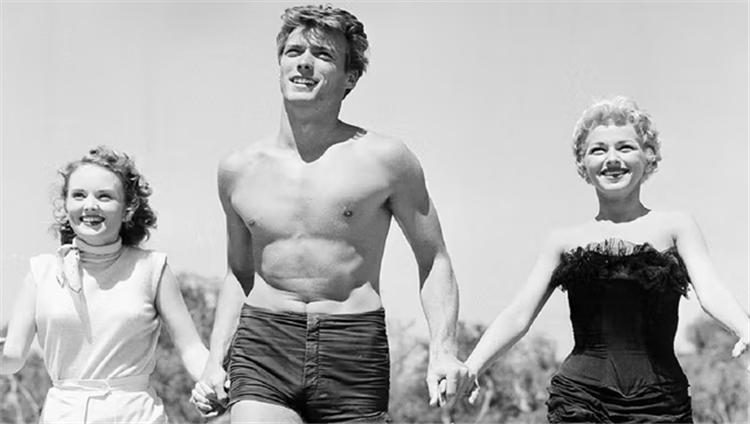While Clint Eastwood has been most closely identified with the thriller and Western genres throughout his now approximately 60-year starring career, Eastwood has nonetheless consistently established himself as one of the most adventurous and ambitious box-office superstars in history by infusing well-worn genre conventions with diverse and interesting themes.
One genre that Eastwood has avoided throughout his directorial and starring career is the horror genre. While Eastwood dabbled in the slasher genre with the 1984 thriller film Tightrope and explored psychological terror with the 2002 psychological thriller film Blood Work and the classic 1971 psychological thriller film Play Misty for Me, these films ultimately reside within the thriller genre.
Indeed, Eastwood’s lone foray, as director and star, into the realm of the supernatural came with the 1985 Western film Pale Rider, in which Eastwood’s titular character represents the manifestation of Death. However, Eastwood’s pre-starring career began in the horror genre with minor appearances in the monster films Revenge of the Creature and Tarantula, both of which were released in 1955.
Revenge of the Creature and Tarantula were both distributed and produced by Universal Pictures, which signed Eastwood to a seven-year acting contract in 1954. However, in October 1955, approximately two months before the release of Tarantula, Universal summarily terminated Eastwood’s $100-per-week contract, ostensibly because Eastwood was perceived by Universal to have a short attention span and speech impediment. The studio also objected to Eastwood’s chipped tooth and protruding Adam’s apple.
Even Clint Eastwood Started At the Bottom

Clint Eastwood made his screen acting debut in the 1955 3D monster film Revenge of the Creature, a sequel to the archetypal 1954 monster film Creature from the Black Lagoon. Revenge of the Creature, like Creature from the Black Lagoon, was directed by Jack Arnold, one of the leading 1950s science-fiction filmmakers, who later directed Eastwood in several episodes of the Western television series Rawhide.
In Revenge of the Creature, the titular creature is revealed to have survived the events of Creature from the Black Lagoon and proceeds to embark on another rampage. In the sequel, the Creature, also known as the Gill-man, has been captured and sent to an Aquarium in Florida after being shot repeatedly and presumably sinking to its death in the previous film.
The presumably captured Creature is studied at the Aquarium by an animal psychologist, Professor Clete Ferguson, and Clete’s love interest, Helen, whom the Creature takes an immediate liking to. After escaping its holding tank and killing a guard, the Creature flees to the ocean. However, the Creature can’t stop thinking about Helen, who is abducted by the Creature and taken to the water, where Clete eventually saves her.
Eastwood, who isn’t credited in the film, appears briefly and entirely peripherally in the film in the role of Jennings, a laboratory technician who, in an approximately 30-second scene, tells Clete that a test cat has eaten a lab rat, only to discover that said rat is in fact located inside one of Jennings’ coat pockets.
Eastwood Battles a Giant Meat-Eating Monster
Clint Eastwood has even less screen time in Tarantula, Eastwood’s second and final horror film, than he does in Revenge of the Creature. Eastwood, who also isn’t credited in Tarantula, nonetheless seems to be much more comfortable in front of the camera in Tarantula than he appears to be in Revenge of the Creature.
In Tarantula, a scientist developing a seemingly miraculous nutrient for the purpose of producing a virtually unlimited food supply for the human population unwittingly triggers rapid growth in a tarantula test subject, which becomes increasingly larger and begins devouring animals and people in the desert town of Desert Rock, Arizona.
After the killer spider proves to be virtually impervious to explosives and gunfire, the Air Force is summoned. Eastwood plays an unnamed jet squadron leader who authorizes a climatic napalm attack against the tarantula, which is subsequently incinerated.
Eastwood Knows How to Frighten Audiences

As a director and star, Clint Eastwood has demonstrated a powerful ability throughout his career to elicit strong emotions from audiences, including fear. This is showcased most effectively in the 1971 psychological thriller film Play Misty for Me, which marks Eastwood’s feature directorial debut.
In the film, Eastwood plays Dave Garver, a nighttime disc jockey who is stalked and terrorized by an obsessive woman, Evelyn, whom Dave had a casual sexual relationship with.
While Play Misty for Me isn’t comparable to the 1960 horror film Psycho in terms of artistic pretension, Eastwood nonetheless generates and maintains a similar level of suspense and terror by showing the audience how Dave’s stalker is, like Norman Bates from Psycho, seemingly capable of anything.
Eastwood’s thorough mastery and understanding of suspense, timing, and indeed horror is evident in a scene in which Dave and his girlfriend take a daytime walk through a forest. While the sequence looks and seems superficially beautiful and tender, there is an undercurrent of menace. The grass is streaked with mud. The sky is overcast and gray. The tall forest trees block out the sky and create deep, ominous shadows. Even in a supposedly harmless daytime scene like this, Eastwood projects the unsettling sense that terror could be lurking anywhere.
